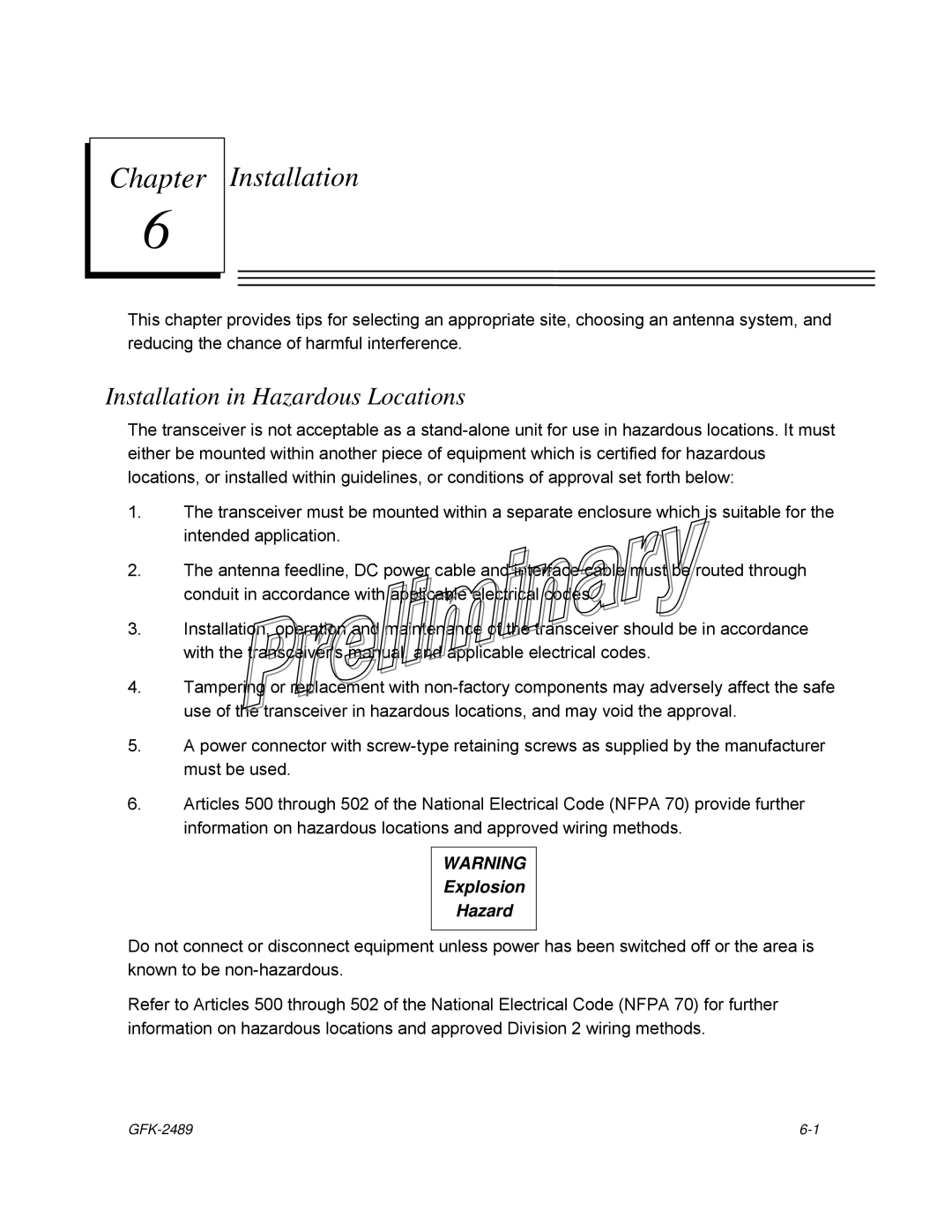
Chapter
6
Installation
This chapter provides tips for selecting an appropriate site, choosing an antenna system, and reducing the chance of harmful interference.
Installation in Hazardous Locations
The transceiver is not acceptable as a
1.The transceiver must be mounted within a separate enclosure which is suitable for the intended application.
2.The antenna feedline, DC power cable and interface cable must be routed through conduit in accordance with applicable electrical codes.
3.Installation, operation and maintenance of the transceiver should be in accordance with the transceiver's manual, and applicable electrical codes.
4.Tampering or replacement with
5.A power connector with
6.Articles 500 through 502 of the National Electrical Code (NFPA 70) provide further information on hazardous locations and approved wiring methods.
WARNING
Explosion
Hazard
Do not connect or disconnect equipment unless power has been switched off or the area is known to be
Refer to Articles 500 through 502 of the National Electrical Code (NFPA 70) for further information on hazardous locations and approved Division 2 wiring methods.
